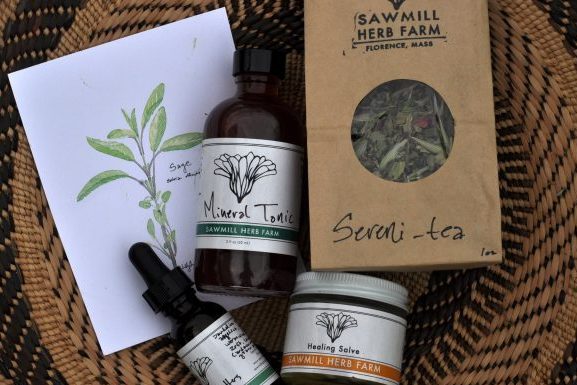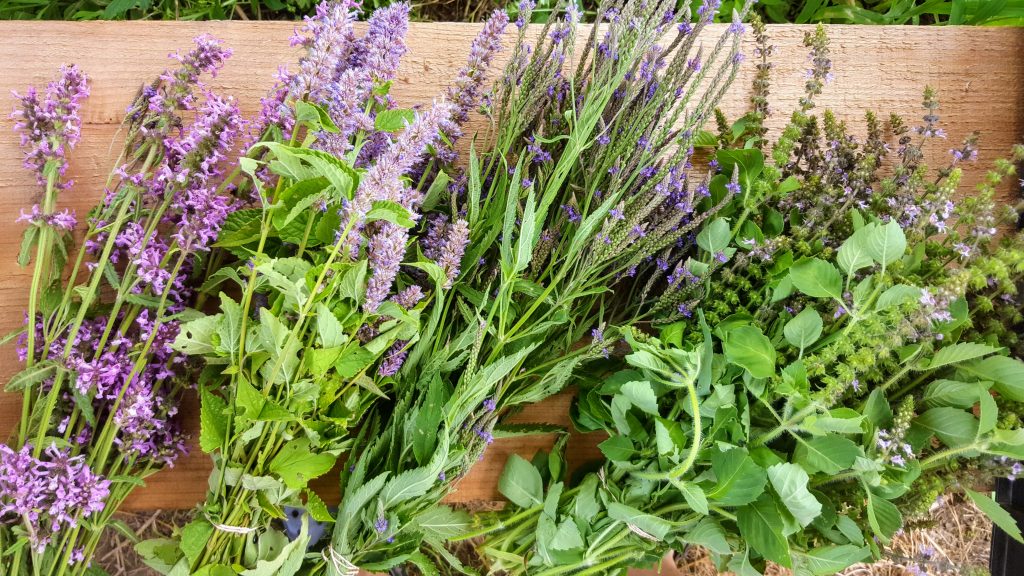Herb Profile: Savory
Savory, Summer (Satureja hortensis) & Winter (S. montana)

Savory is a member of the mint family, commonly found in the kitchen spice rack. There are two kinds of savory, summer and winter, similar but with distinct differences. Both are warming and relaxing to the respiratory and GI tract and have long been used for colds, respiratory infections, bronchitis, asthma, gastritis, and colic. Summer and winter savory both contain volatile oils and tannins.
While winter savory is more hot and drying, summer savory is sweeter, and therefore more nutritive, and less warming. Summer savory is used as a warming and nourishing stimulant for a depleted body, specifically the endocrine and nervous system and for building up the immune system. Winter savory, being more pungent is used for its heating quality to help draw out toxins. It is ideal for cold moist conditions.
Preparations
Savory is most commonly used as a spice in cooking however it also works wonders as a tea or tincture.
Savory Calcium Sprinkle (from The Essential Herbal for Natural Health by Holly Bellebuono)
Sprinkle this calcium-rich blend over garlic toast, soup or bruschetta for a savory flavor.
Combine 3 tablespoons dried nettle, 3 tablespoons dried oregano, 2 tablespoons dried savory, 2 tablespoons fennel seeds, 3 tablespoons celery seeds and 3 tablespoons dill seeds and store them in a glass jar with a tight-fitting lid. This blend has a shelf life of four months.
(herb photo courtesy of a CSA member)
🌿 Grow, Harvest & Learn with Us This Season! 🌿
Whether you're looking to fill your apothecary with vibrant, fresh herbs, start your own garden with strong, healthy seedlings, or deepen your knowledge of herbal medicine, we've got you covered.
Join our Fresh Herb CSA to receive weekly bundles of medicinal and culinary herbs, plus guidance on how to use them. Pre-order seedlings to get a head start on your herb garden with our carefully grown plants. Explore our herbal education programs to learn hands-on medicine-making, plant connection, and more.
Looking for high-quality, certified organic herbs year-round? We also offer dried herbs and small-batch tea blends, thoughtfully grown and harvested to bring you the best in herbal wellness.
Be part of a community that values resilience, self-sufficiency, and deep connection to the land. 💚
Sign up for the CSA, pre-order seedlings, shop our dried herbs and tea blends, or explore our herbal education offerings today!
Disclaimer
These statements have not been evaluated by the Food and Drug Administration. This product is not intended to diagnose, treat, cure, or prevent any disease. For educational purposes only. We do not endorse the websites linked to in the resources and have not extensively reviewed all the information on external pages for accuracy. Everyone reacts differently to herbs and we do not attempt to be completely inclusive in the information and contraindications for each herb. Trust your intuition if something is not feeling right for you.
Shop our Apothecary and Nursery
-

Apothecary Products
Nourish yourself and your family with a certified organic farm grown apothecary ...
-

Nursery Products
Grow your garden. We grow certified organic herb, flower and vegetable starts. ...


